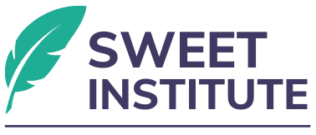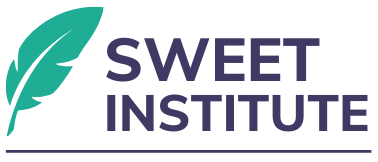Cognitive Behavioral Therapy for Eating Disorders: A Targeted and Experiential Framework for Body and Belief Integration

Cognitive Behavioral Therapy for Eating Disorders: A Targeted and Experiential Framework for Body and Belief Integration
Abstract
Cognitive Behavioral Therapy for eating disorders (CBT-E) is a specialized, evidence-based approach that targets the cognitive and behavioral maintenance factors of disordered eating. This article presents a structured and experiential model of CBT-E focused on the first three sessions: assessment and engagement, psychoeducation and self-monitoring, and early behavioral change. Grounded in the transdiagnostic model of eating pathology, CBT-E emphasizes collaborative formulation, body image flexibility, and behavioral experiments that challenge dietary restraint and weight-related beliefs. This article provides clinical strategies and narrative illustrations for initiating effective CBT-E treatment in clients with anorexia nervosa, bulimia nervosa, and other specified feeding and eating disorders (OSFED).
Keywords
CBT-E, Eating Disorders, Anorexia, Bulimia, Body Image, Cognitive Restructuring, Self-Monitoring, Food Anxiety
Introduction
Eating disorders affect an estimated 9% of the global population and are associated with some of the highest mortality rates of any psychiatric illness (Arcelus et al., 2011). Cognitive Behavioral Therapy, particularly the enhanced version (CBT-E), is currently the leading outpatient treatment for individuals with eating disorders (Fairburn, 2008). CBT-E focuses on identifying and interrupting the cognitive and behavioral patterns that maintain disordered eating, such as shape overvaluation, dietary restriction, and emotional avoidance. This article outlines the first three sessions of CBT-E, offering a structured yet personalized approach to early engagement, insight-building, and behavioral change.
Method and Framework
CBT-E is built on a transdiagnostic model that applies across restrictive, binge-purge, and mixed symptom presentations. Core techniques include:
- Collaborative case formulation
- Real-time self-monitoring of eating, compensatory behaviors, and thoughts
- Psychoeducation around the effects of starvation and cycles of dietary restraint
- Behavioral interventions to reduce avoidance and reintroduce flexible eating
- Body image exploration and restructuring of overvalued ideals
The treatment is staged, often over 20 sessions, with the first phase (weeks 1–4) focused on engagement, education, and early behavioral shifts.
Session-by-Session Application
Week 1: Assessment and Collaborative Engagement
The first session includes a thorough assessment of current eating patterns, weight history, medical risks, and body image beliefs. A collaborative treatment contract is developed. Clinicians emphasize the nonjudgmental nature of the work and the shared goal of restoring autonomy and well-being. The client is introduced to the idea of externalizing the disorder: “This is not who you are—it’s something that has taken up space in your life.” A focus on motivation and the impact of the eating disorder begins to shift the therapeutic frame from shame to possibility.
Week 2: Psychoeducation and Self-Monitoring
Clients receive education on the physiological and psychological impact of dietary restraint and chaotic eating. The therapist introduces a daily self-monitoring record to track time, place, and content of meals/snacks, along with associated thoughts and behaviors. This helps identify patterns and triggers. Clients often begin to see the link between restriction and bingeing or compensatory behaviors. The focus is on awareness, not immediate change.
Week 3: Behavioral Experiments and Disruption of Dietary Rules
Clients are invited to choose one rule or avoided behavior (e.g., eating past a certain hour, eating a feared food) to challenge in a controlled way. This behavioral experiment is paired with a reflection journal: What happened? What did you expect? What did you learn? The clinician reinforces any acts of flexibility, no matter how small, and helps clients notice changes in emotional response or intrusive thoughts. Clients begin to experience disconfirmation of feared outcomes and build confidence in their capacity to reclaim eating autonomy.
Discussion
The early sessions of CBT-E are foundational for developing therapeutic alliance, reducing avoidance, and building psychological flexibility. Many clients arrive with ambivalence, fear, or a sense of identity fused with the eating disorder. Clinicians must create a balance of structure and compassion—offering both clear guidance and non-pathologizing presence. These first steps prepare the ground for deeper cognitive work and sustainable recovery.
Conclusion
Eating disorders thrive on secrecy, rigidity, and distorted meaning. CBT-E interrupts these patterns through visibility, flexibility, and connection. By establishing trust, building awareness, and introducing behavioral choice, the first three sessions of CBT-E open a path toward healing the relationship with food, body, and self.
References
- Fairburn, C. G. (2008). Cognitive behavior therapy and eating disorders. Guilford Press.
- Arcelus, J., Mitchell, A. J., Wales, J., & Nielsen, S. (2011). Mortality rates in patients with anorexia nervosa and other eating disorders. Archives of General Psychiatry, 68(7), 724–731.
- Murphy, R., Straebler, S., Cooper, Z., & Fairburn, C. G. (2010). Cognitive behavioral therapy for eating disorders. The Psychiatric Clinics of North America, 33(3), 611–627.
- Wilson, G. T., Grilo, C. M., & Vitousek, K. M. (2007). Psychological treatment of eating disorders. American Psychologist, 62(3), 199–216.
Download the scholarly version of this article by clicking HERE






